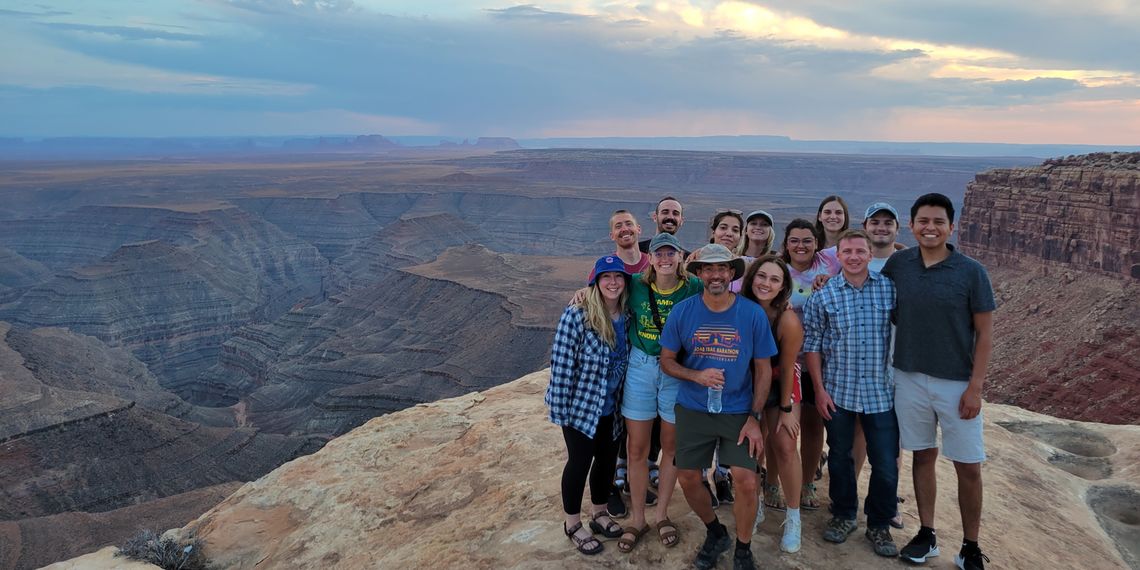TRUE Program
Learn more about Tribal, Rural, and Underserved Medical Education here.
had all read about "challenges in accessing healthcare. Seeing these circumstances for ourselves, however, gave us a new appreciation for solving complex medical problems.
Through The University of Utah's Graduate Certificate in Tribal, Rural and Underserved Medical Education (TRUE) vision of hands-on learning, we saw how problems were addressed specifically for the patients on the Navajo reservation and other rural areas. TRUE gave us real-world experiences and brought to life months of learning from books and classrooms. We learned that awareness and exposure of a problem is the first step to solving it. Complex, systemic challenges can be daunting; seeing the situations close-up helped us understand how a community can come together to break down barriers and make an impact.
Location, location, location
Most homes on the Navajo reservation don't have a physical address. In emergency situations, it can be challenging for EMS to find a caller's exact location which could delay critical services. Norbert Nez, Navajo Nation Division of Community Development’s Computer Operations Manager, and Susan Hendy, Associate Clinical Nursing Director for the Utah Navajo Health System, recognized the seriousness of this issue.
Collaborating with Doug Rinckes, Plus Codes Developer at Google, they created plus codes for the Navajo Nation. These codes reference a location based on GPS coordinates. It’s now as easy as going to Google maps and clicking on the blue dot representing your home and the plus code is displayed. Plus codes enable people in rural areas to get emergency medical help, open bank accounts, access benefits and help them register to vote in the correct precinct. High tech met rural in a remarkable way, and improved health care access.
Low-tech communication
Many in the community don’t watch TV and they don’t always have Wi-Fi or cellular connection. Early in the pandemic, and unaware of COVID transmission, the Navajo people went about daily life in their up close and personal tradition.
Before spending time on the reservation, we took the ease of communication for granted—cell phones, the Internet, email, and social media. Without much wifi distribution or cellular distribution to support certain technology, many Navajo elders haven’t been able to adopted these technology-based communications. Rather, they have kept the oral tradition of sharing their knowledge through language, stories, and traditions. They speak their native tongue. They breathe new life into future generations by sharing their stories. This low-tech communication happens face-to-face when visiting family and friends.
When COVID-19 hit the Navajo Nation, both sharing information and implementing distancing protocols was challenging. Health protocols took time to be communicated. Quarantine protocols prevented infection, but cut crucial ties to family, friends, and basic needs.
The solution was simple and low-tech. Homemade "Don't Visit Us" signs are still posted in front of homes on the reservation. In a world where an in-person visit is so meaningful, the signs helped create an understanding of community concern and safety. Civic-minded art is everywhere, reminding tribe members: "Mask up. We're in this together."
Medical care and more
The Navajo health system goes far beyond meeting the medical needs of vaccines, antibiotics, and insulin. They also address the most basic human survival needs.
Many Navajo homes rely on wood stoves to heat their homes. During the pandemic, Elders of the community had to social distance and were unable to interact with other tribe members to get firewood. Utah Navajo Health System saw this need and put a plan in place to deliver firewood.
Providing more than traditional Western medicine, like understanding the need for firewood, builds trust within the community.
This isn’t something we could learn from a text book. We have a better knowledge that cultural considerations can change outcomes.
Local solutions
During our visit to the Navajo Nation, we watched health care providers around us conquer complex local problems. Small-scale problem-solving—rather than nationwide answers—created solutions to improve health care right where it was needed. Now the Navajo Nation has one of the nation's highest vaccination rates because providers and community leaders adapted to the people.
Awareness of health care barriers, and a passion for problem solving, is something we’ll take with us to our practices.
*Originally posted November 2021
Cameron Arkin
Michaela Kowalewski
Tsivya Devereaux
Sean Batenhorst
Olivia Spencer
It’s one thing to read about “rural” health care—it’s entirely another to experience it. Faculty and students from the Tribal, Rural, and Underserved Medical Education (TRUE) Graduate Certificate share experiences and insights from summer in the Navajo Nation.
Accelerate Learning Community has now grown to exceed more than half a million learners from across the world! Each month, we average around 30,000 visitors who learn about health care equity, improvement, leadership and resilience from U of U Health faculty, staff, students, and trainees. Continuing our annual tradition of giving thanks, we’re celebrating the eight most popular national articles and local favorites in 2022.
Physician leader and community organizer Richard Ferguson shares his work to form Utah’s first organization for Black physicians, with the aim to build a community among current Black physicians, residents, and students working or living in Utah.
